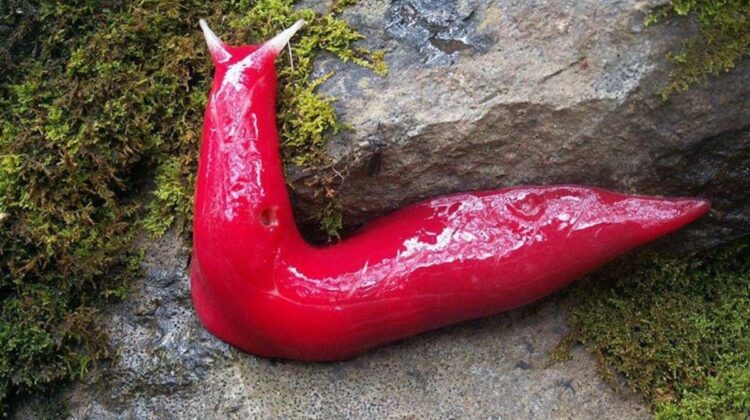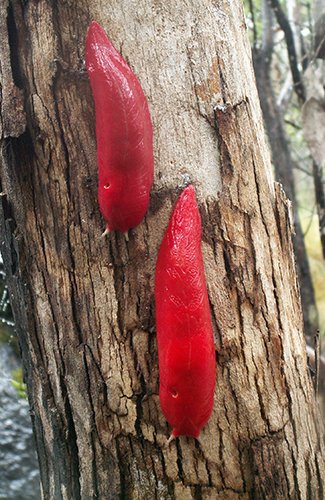
Hidden atop an extinct volcano in inland New South Wales, there exists a truly extraordinary creature – the giant pink slug. These massive, neon-pink slugs, known scientifically as Triboniophorus aff. graeffei, can grow up to a staggering length of 20 centimeters. Their vibrant appearance and unique habitat make them a captivating and peculiar species.

Mount Kaputar National Park is home to these fascinating slugs, and park ranger Michael Murphy has captured incredible photographs of them. After rain showers, hundreds of pink slugs can be seen making their way down the trees, having spent the night foraging for lichen and moss.
These colorful slugs are related to another peculiar species, the red triangle slug, which is also found in the same region. Situated 1,500 meters above sea level on an extinct volcano near the township of Narrabri, Mount Kaputar serves as a secluded haven for several distinct species.
The considerable size of these slugs is a result of both genetic traits and the abundance of food in their habitat. With a wet patch of approximately 10 square kilometers and minimal predation, these slugs have thrived in their remote and specialized environment.

Although their discovery is relatively recent, the pink slugs have remained relatively unknown due to their remote location. However, Michael hopes that their charismatic appearance and size will bring attention to the many other lesser-known threatened invertebrates.
Michael, a trained biologist specializing in land snails, highlights the alarming decline of land snails compared to other animal groups. According to the International Union for the Conservation of Nature (IUCN), there are more land snails listed as threatened, endangered, or extinct than birds, mammals, reptiles, amphibians, and fish combined.

In the habitat shared by the giant pink slugs, the Kaputar hairy snail, the Kaputar cannibal snail, and other important species reside. Efforts are underway to designate this unique ecosystem as an endangered ecological community, making it Australia’s first land-snail habitat to receive such recognition. Michael emphasizes the importance of raising awareness about the impact of climate change on mountain invertebrates.
As for the intriguing pink coloration of the slugs, Michael offers an interesting theory. It is believed that their pink hue serves as camouflage against fallen snow gum leaves on the forest floor. However, considering that these slugs spend most of their time high up in the canopy, far from the ground, it is possible that their color serves a different purpose. Perhaps, as Michael suggests, if you are a giant slug dwelling on an isolated mountaintop, you have the freedom to be whatever color you desire.

The giant pink slugs of Mount Kaputar are a testament to the astounding diversity and adaptability of nature. They remind us of the hidden wonders that exist within the world’s ecosystems and the importance of preserving these delicate and unique habitats for future generations to appreciate.

Leave a Reply